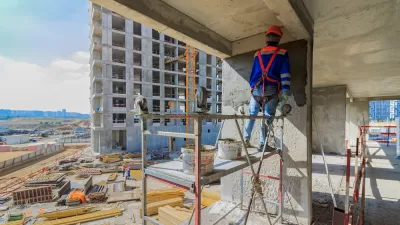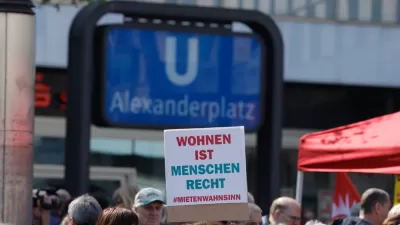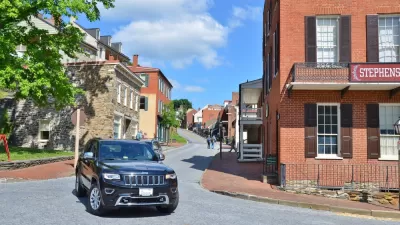The no man's land once occupied by the Berlin Wall has been the focus of redevelopment efforts for nearly two and a half decades now. But the slow pace of rebuilding means the scars of the Cold War remain visible across the city's landscape.
William Boston looks at the slow pace at which the gulf between Berlin's two halves is being repaired. "It is taking much longer to fill in the open spaces left by the division
of the city than many experts and city planners once expected," observes Boston. "The
rebuilding of Berlin, the main driver of property investment in the
city, is far from over. It may not even be half-time, property experts
say, which makes Berlin a huge exception among European capitals."
Despite Germany's strong economy, the room for redevelopment has
allowed commercial rents in the city to remain well below Europe's other
capitals.
"That means not only will the Berlin building boom likely keep chugging
along for years, but there is little reason to expect a squeeze on
supply to put pressure on prices as long as there is ample space to
build new offices, hotels and shopping centers in the shadow of the Wall
in central Berlin."
In some areas, however, the lack of large-scale rebuilding is not for lack of trying on the part of developers.
"The removal of the Wall created new open spaces for citizens in a city
that had grown used to being, well, walled in. In some cases, local
citizens have successfully blocked or delayed development of stretches
of the former death strip in order to preserve that open space for
public use."
Thanks to Daniel Lippman
FULL STORY: A Slow Pace to Reconnect East and West

Alabama: Trump Terminates Settlements for Black Communities Harmed By Raw Sewage
Trump deemed the landmark civil rights agreement “illegal DEI and environmental justice policy.”

Planetizen Federal Action Tracker
A weekly monitor of how Trump’s orders and actions are impacting planners and planning in America.

The 120 Year Old Tiny Home Villages That Sheltered San Francisco’s Earthquake Refugees
More than a century ago, San Francisco mobilized to house thousands of residents displaced by the 1906 earthquake. Could their strategy offer a model for the present?

Opinion: California’s SB 79 Would Improve Housing Affordability and Transit Access
A proposed bill would legalize transit-oriented development statewide.

Record Temperatures Prompt Push for Environmental Justice Bills
Nevada legislators are proposing laws that would mandate heat mitigation measures to protect residents from the impacts of extreme heat.

Downtown Pittsburgh Set to Gain 1,300 New Housing Units
Pittsburgh’s office buildings, many of which date back to the early 20th century, are prime candidates for conversion to housing.
Urban Design for Planners 1: Software Tools
This six-course series explores essential urban design concepts using open source software and equips planners with the tools they need to participate fully in the urban design process.
Planning for Universal Design
Learn the tools for implementing Universal Design in planning regulations.
Clanton & Associates, Inc.
Jessamine County Fiscal Court
Institute for Housing and Urban Development Studies (IHS)
City of Grandview
Harvard GSD Executive Education
Toledo-Lucas County Plan Commissions
Salt Lake City
NYU Wagner Graduate School of Public Service





























